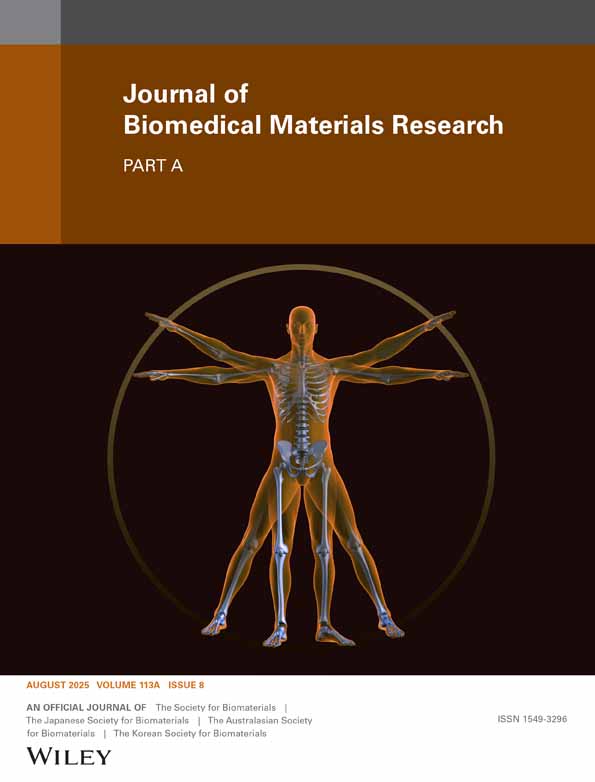Biodegradation of polyurethane under fatigue loading
Abstract
A method utilizing expansion of a diaphragm-type film specimen was developed to study in vitro biodegradation of poly(etherurethane urea) (PEUU) under conditions of dynamic loading (fatigue). A finite element model was used to describe the strain state, which ranged from uniaxial at the edges of the film to balanced biaxial tensile strain at the center. During testing, the film was exposed to a H2O2/CoCl2 solution, which simulated in vivo oxidative biodegradation of PEUU. The extent of chemical degradation was determined by infrared analysis. Physical damage of the film surface was characterized by optical microscopy and scanning electron microscopy. Dynamic loading did not affect the rate of degradation relative to unstressed and constant stress (creep) controls in regions of the film that experienced primarily uniaxial fatigue; however, degradation was accelerated in regions that experienced balanced biaxial or almost balanced biaxial fatigue. It was concluded that the combination of dynamic loading and biaxial tensile strain accelerated oxidative degradation in this system. Chemical degradation produced a brittle surface layer that was marked by numerous pits and dimples. Physical damage of the surface in the form of cracking occurred only in fatigue experiments. Cracking was not observed in unstressed or creep tests. Cracks initiated at the dimples produced by chemical degradation, and propagated in a direction that was determined by the strain state. © 2003 Wiley Periodicals, Inc. J Biomed Mater Res 65A: 524–535, 2003




